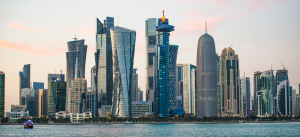As a major travel destination with strong import dependence and access to a large consumer base of expats, tourists and neighbouring markets, Hong Kong, the ‘pearl of the Orient,’ is a real hub of opportunity for Australian food and beverage suppliers.
Here’s why:
- Currently at 7 million, reputable estimates that population growth will reach 8 million as soon as 2030
- The autonomous territory of China relies heavily on imports into the market
- Minimal domestic agriculture production and limited food processing capacity
- 95% of food and beverage products are imported
- Australia is currently the fourth largest food-supplying country to Hong Kong (after China, Thailand and the USA)
- Hong Kong is also a trading hub for re-exports into Mainland China, Macau and other neighbouring markets in Asia
- Foreign citizens are expected to increase by 20.1% in 2015-2030, a faster rate than Hong Kong citizens (8.2%), to total 772,688 people. They are set to make up 9.7% of the population in 2030, up from 8.8% in 2015
- With a wealthy population and a significant tourism industry (over 59.3 million visitors in 2015), Hong Kong is a substantial and high-value market for all kinds of food products
- It is also considered an attractive shopping area for Mainland Chinese tourists, opening the door to 45 million Chinese consumers who visit the territory per year
- While demand for various kinds of convenient foods is increasing, consumers are becoming more health-conscious about what they eat
- The result is an increasing trend towards wholesome, functional and organic foods, reflected in the introduction of more of these products into retail channels
- Hong Kong has experienced rapid economic growth over the last 20 years with a rising middle class who has access to an increasing amount of disposable income
- The largest spending group is comprised of middle class individuals with a growing disposable income, who prefer branded products for their perceived superior product quality and safety
- A rising demand for high-end products in family-related categories is driven by those aged 35-39 who account for the largest share of top income earners in Hong Kong (with an annual gross income of over USD $150,000)
- The former British colony’s per capita gross income and spending levels are amongst the highest for countries in the Asia Pacific
- Consumer expenditure is playing an increasingly important role in Hong Kong’s economy
- While Hong Kong operates separately from China, the Chinese make up over 90% of the Hong Kong population and it is therefore highly involved in consumer trends and spending patterns. China is the second-biggest health food market in the world, after the US
For this discerning market base, an equally deliberate market entry plan is required. From selection of the right niche for your product, to connecting with the right retailers and buyers, to employing the strategies you need for continual growth – this market is ripe and ready for the picking (or, ahem, harvesting). So get your gear on: we’re going diving!



